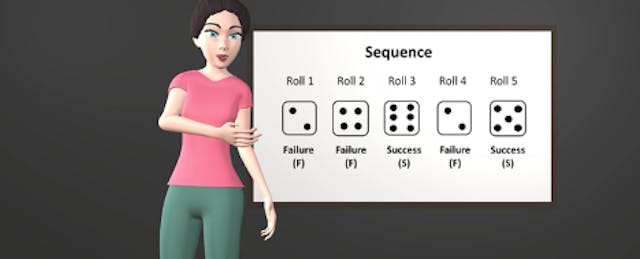Studies have shown that students learn better from instructors displaying positive emotions—in other words, an upbeat lecturer is more effective than someone delivering in monotone. But when video lessons are led by computer animations instead of live instructors, how much do their simulated emotions matter?
That’s the subject of a research project at the University of California at Santa Barbara. Researchers have created a series of video lessons—some delivered by humans and others by animated digital characters—to see whether students notice the difference, and how it matters.
“It’s not just a cognitive process that goes into learning from an instructor, whether human or virtual,” says one of the researchers, Alyssa Lawson, a doctoral student at UC Santa Barbara. Emotion matters, too—or as she put it, “positive affect processing.”
The research group is testing what it calls their newly-proposed “Cognitive Affective Model of e-Learning.” The theory is that when instructors display a “positive stance” during their teaching, it helps students develop a stronger connection with the instructor. That connection then gives the learner more motivation to put in the effort to learn from the instructor, and that leads to more effective learning.
Their hypothesis is that this theory will hold true whether the instructor is human or virtual.
Their first step was to show whether students pick up on the simulated emotions of the animated instructors in video lectures. In a study published this month in the International Journal of Artificial Intelligence in Education, Lawson and her colleagues found that learners did pick up on the affective nature of the lecture videos led by computer animations. But students were better able to tell when a human professor was happy or frustrated than when an animation was attempting to show those emotions.
But did the students learn more from the happy teachers than the bored or frustrated ones? In the case of the human instructors, students did show more learning from upbeat lectures than flat ones. When it came to the animations, however, they found no significant difference in students’ learning between happy and downbeat virtual instructors.
That doesn’t mean the researchers are giving up on their theory, however. As they note in their paper, virtual teachers can come in pretty much any shape and size, so perhaps a more skillfully executed computer animation or one in a different artistic style could work better than the ones used in this experiment. Lawson says they collaborated with professors at Purdue University who made the animations they used.
If it does turn out that a happy-looking computer-drawn professor can motivate students as well as a human, that could be especially helpful for the development of virtual reality training efforts, argues Lawson. “It’s a lot easier to incorporate a virtual instructor in that environment than it is to do a human instructor,” she notes.
“I have pretty high hopes that with a virtual instructor—especially one that looks human, acts human and talks like a human—we will find effects just like we do with human.”
Or maybe research will show that humans just have an advantage when it comes to making emotional connections that computer-drawn simulations will never replicate.


